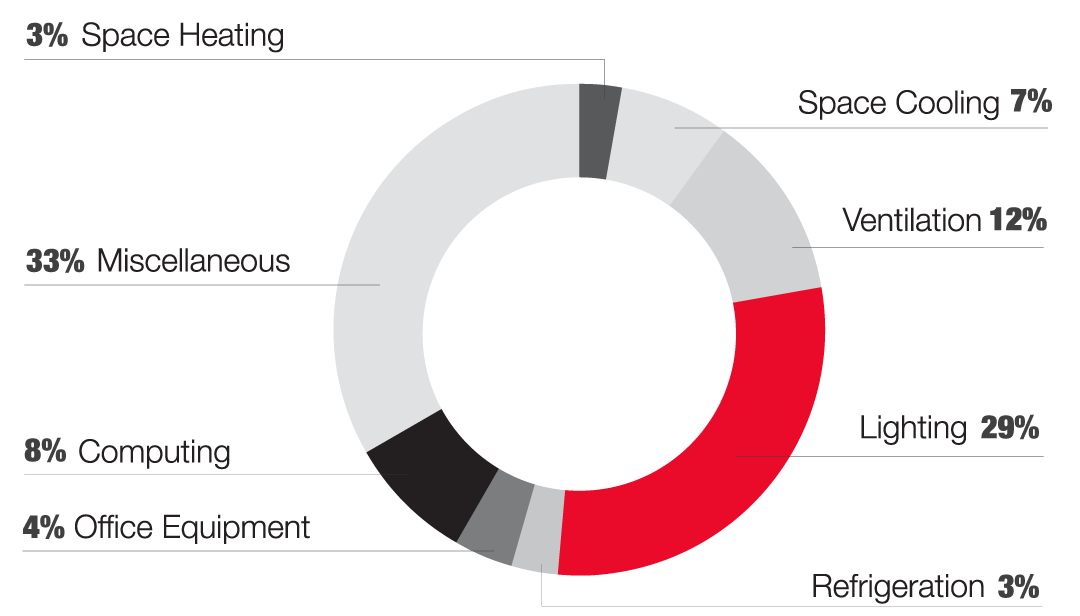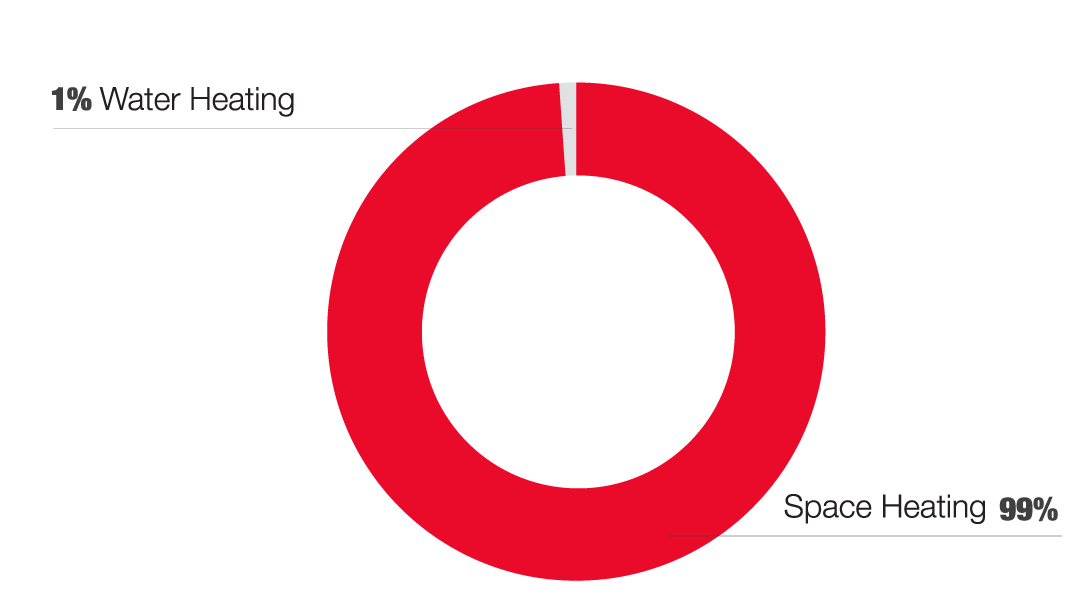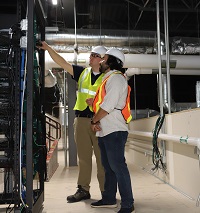Tune up energy bills at your auto shop
Did you know the average auto repair shop in the Midwest spends over $5,000 per year on electricity and natural gas? What could be using so much energy? Lighting your work space and keeping the building a comfortable temperature as vehicles and customers come and go are two of the biggest culprits. Bundling upgrades and saving on improvements is easier than ever with the Small Business Express program, which connects you with qualified contractors and rebates to create lasting energy efficiency savings for your shop or garage.
What uses the most energy in auto shops
The following pie charts illustrate what auto shop activities use and cost the most. Space heating, cooling and ventilation, and lighting account for a large portion. Electricity end uses include (from the top, counterclockwise): 3% space heating, 33% miscellaneous, 8% computing, 4% office equipment, 3% refrigeration, 29% lighting, 12% ventilation and 7% space cooling. Natural gas end uses include (from the top, counterclockwise): 1% water heating and 99% space heating.
Electricity End Uses

Natural Gas End Uses

What's costing auto shops the most
| End Uses | Average Electric Cost/Month | Average Gas Cost/Month | Energy Savings Potential |
|---|---|---|---|
| Space Heating, Cooling and Ventilation | $67 | $151 |
Moderate
|
| Miscellaneous | $100 | - |
Moderate
|
| Lighting | $88 | - |
High
|
Small Business Express is here to lend a hand
Small Business Express makes it easy for you to get professional guidance to identify energy-saving opportunities. Eligible rebates can help lower your out-of-pocket cost to replace failing equipment, and help you save energy and money long term.
Ways to Save

Heating equipment is one of the largest energy users in an auto shop. There are several ways to reduce costs, from simple changes to replacing equipment.
- Simple: Seal around windows and doors with new caulk and weather stripping every few years to prevent energy loss.
- Low cost: Service equipment and change filters regularly. If you use radiant tube heaters, keep the reflectors clean and free of dust to ensure efficient operation. Upgrade to a programmable thermostat to ensure heating and cooling equipment runs less often during unoccupied hours.
- Capital investment: Replace older unit heaters with more efficient units in the garage areas. Another efficient option is infrared radiant heaters for areas with high ceilings. Add insulation to your building to ensure the warm or cool air stays inside.

$100 of your monthly electric bill goes to miscellaneous energy use, such as compressed air systems, hydraulic lifts and other mechanical equipment. Ensuring equipment is functioning properly can help to lower that cost.
- Simple: Periodically check air compressor belts for wear and tension, and check for leaks in hoses. Stagger equipment start times to help reduce peak demand charges.
- Low cost: Service shop equipment on a regular basis to ensure motors, compressors and other mechanical equipment life spans are extended. Change air compressor filters as recommended by the manufacturer.
- Capital investment: If installing a new air compressor, it is important to make sure the system size and pressure performance are optimized for your needs and efficiency.

Lighting
Replacing lighting is a great way to save money while also improving the work conditions. Switching to LEDs will also reduce your replacement costs since they have a longer life span.
- Simple: Turn lights off when a space is not in use.
- Low cost: Install sensors to turn lights off when the area is not in use or sunlight is adequate.
- Capital investment: Replace existing lights with LEDs to see savings of 50% or more! In shop areas, replacing high bay lights will save on energy, as well as maintenance costs, due to LEDs having a longer life span. Replace exterior lights with LEDs to save even more.

See how your shop compares
Energy Use Intensity (EUI) is a common measure used to benchmark a building’s energy use as a factor of its size. To calculate EUI for your auto shop, total your electric bills for one year, then divide by your building’s square footage; repeat for natural gas. If the score is lower than those listed below, you are using less energy than most.
|
Average EUI for Auto Shops in the Midwest
|
|
|---|---|
|
Electricity
|
Natural Gas
|
|
6.9 kWh/square foot
|
0.45 therms/square foot
|
Call us today at 800-432-8583 to learn about tools that can help you with benchmarking your facility.
Other Resources